Sign up for our newsletter
Subscribe to our emails
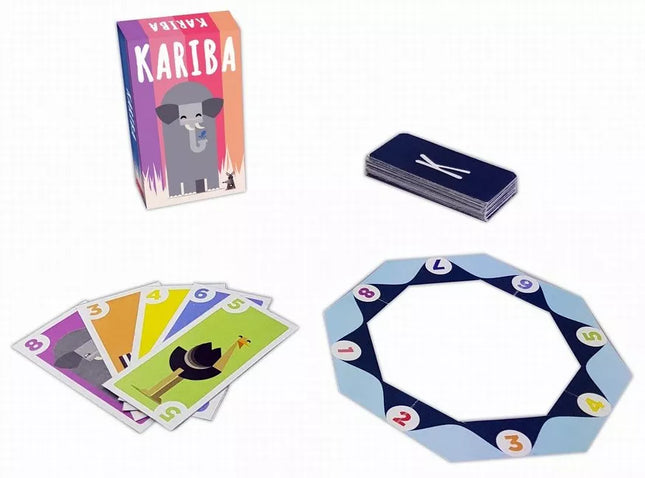
All animals are thirsty after an adventurous day in the savannah, so they've all trekked to the drinking grounds. Every animal wants to be the first to drink, but watch out! The elephant scares the rhino, the rhino scares the ostrich, and the ostrich scares the zebra. Anything can happen... The mice might even scare the elephant! The player who scares away the most animals wins.To set up Kariba, shuffle the cards and deal five to each player, placing the remainder face down as a deck. Place the game board in the center of the table.During a round, a player lays down one or more cards of the same animal, placing the cards in the corresponding position (1-9) around the lake.If at least 3 cards of the same animal are placed in front of the lake, then these animals scare weaker animal(s) (closest lower number) while they are drinking. The player picks all the cards from the weaker animal off the board and puts them face down in front of her/him. Each card is worth 1 point, and whoever has the most points wins.
£11.99 £10.80
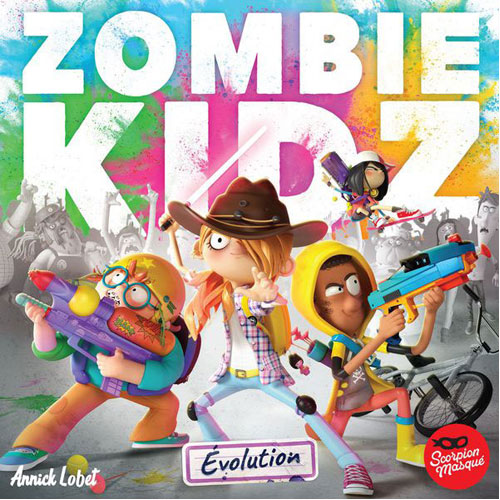
Zombie Kidz Evolution is the first "legacy"-style game for kids, with basic gameplay similar to the 2013 title Zombie Kidz — but things will quickly evolve!In the game, the young players are at school when zombies start to attack, infiltrating the entryways, then barring the way to classrooms. Players move through rooms and entryways to eliminate zombies and keep the zombie reserve full. If a zombie must enter the school but none are available, then the school has been overrun and the players lose. To win the game, players need to lock each of the four entryways as apparently the custodian has abandoned the post and given up the school for lost.As players get better, they can complete missions, track their development through a trophy-sticker system reminiscent of video games, and open envelopes that contain new material for the game, upping the challenge they face while also providing them with new powers and new heroes as well.
£24.00 £21.60
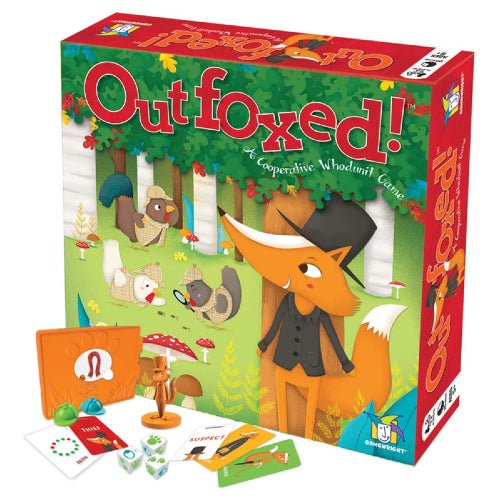
Game description from the publisher:Mrs. Plumpert's prized pot pie has gone missing, and now it's a chicken chase to crack the case!In Outfoxed, you move around the board to gather clues, then use the special evidence scanner to rule out suspects. You have to work together quickly because the guilty fox is high-tailing it towards the exit! Will you halt the hungry hooligan before it flies the coop — or will you be outfoxed?
£22.00 £19.80
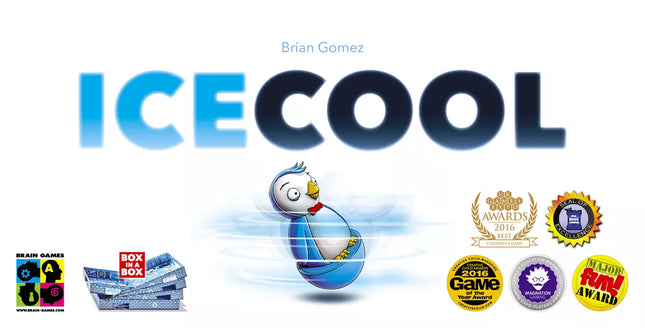
The lunch break is almost there and all of the young penguins would finally get the fish they’ve been craving. However, some rascals think they are quick enough to snatch some of the fish before the lunch break starts, but they have forgotten one thing – the Hall Monitor! Each school day one of the penguins is designated to watch over the school, and this is his moment to shine – for each rascal penguin he catches he would get additional fish!A fun run takes place – the rascals are running everywhere and trying to snatch some fish on their way, but the Hall Monitor is trying to catch each and one of them to have some order in the school. Who will be more successful?ICECOOL is a flicking game in which each round one of the players takes the role of the Hall Monitor (also called "the Catcher") – his aim will be to catch each other penguin and get points for that. The others (also known as "Runners") will try to run through several doors, thus gaining fish (that give them points) on their way. When either the Hall Monitor has caught each other penguin once or any of the others has gone through all 3 doors that have fish on them, the round is over. Each player will take the role of the Hall Monitor once and at the end of the game the winner will be the one with the most points on their fish cards.The penguins can be flicked in a straight line, make curves and even jump over the walls! Each player will have to use the best of their skills in order to get the most points in this fun and exciting game. It's not just cool, it's ICECOOL!
£30.00 £27.00
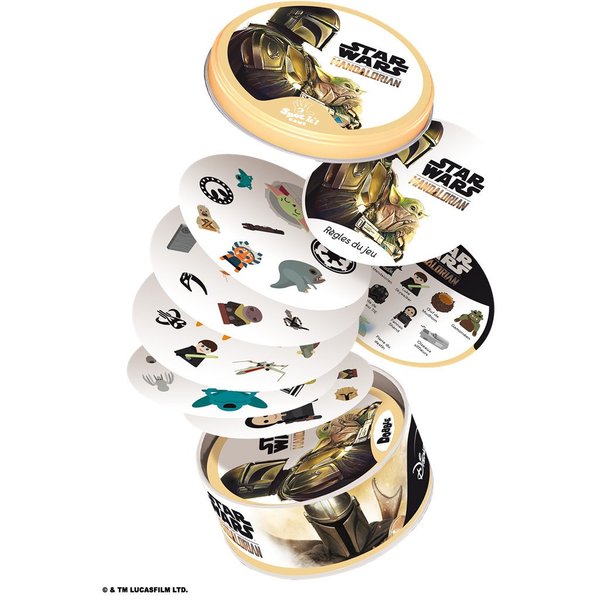
Spot it!, a.k.a. Dobble, is a simple pattern recognition game in which players try to find an image shown on two cards.Each card in original Spot it! features eight different symbols, with the symbols varying in size from one card to the next. Any two cards have exactly one symbol in common. For the basic Spot it! game, reveal one card, then another. Whoever spots the symbol in common on both cards claims the first card, then another card is revealed for players to search, and so on. Whoever has collected the most cards when the 55-card deck runs out wins!Rules for different games – each an observation game with a speed element – are included with Spot it!, with the first player to find a match either gaining or getting rid of a card. Multiple versions of Spot it! have been published, with images in each version ranging from Halloween to hockey to baseball to San Francisco.The game is sold as Spot it! in the USA and Dobble in Europe, with slight differences between the two editions.Note: some versions have fewer cards and fewer symbols per card. (E.g. 30 cards with 6 symbols each.): Spot it! 1,2,3
£15.99 £10.40

THE UNIVERSE NEEDS SAVING THE ALIENS ARE SEEKING THEIR CHAMPION BUT THIS IS NO TIME FOR A HERO... THIS IS TIME FOR A CHICKEN!!! WELCOME TO CHICKENS 'N ALIENS A FUN CARD GAME FOR 2-4 PLAYERS
£20.00

Eat brains. Don't get shotgunned. In Zombie Dice, you are a zombie. You want braaains – more brains than any of your zombie buddies. The 13 custom dice are your victims. Push your luck to eat their brains, but stop rolling before the shotgun blasts end your turn! Whoever collects 13 brains first wins. Each game takes 10 to 20 minutes and can be taught in a single round. Each turn, you take three dice from the box and roll them. A brain symbol is worth one point at the end of the round, while footsteps allow you to reroll this particular dice. Shotgun blasts on the other hand are rather bad, cause if you collect three shotgun blasts during your turn, it is over for you and you get no points. After rolling three dice, you may decide if you want to score your current brain collection or if you want to push your luck by grabbing new dice so you have three again and roll once more.
£16.00 £14.40

Zombie Kittens is still the highly strategic, kitty-powered version of Russian Roulette that you love, but it introduces a brand new deck of cards so that your game doesn’t end just because you blow up. Only living players can win the game, but dead players now get to keep the cards in their hands when they explode. They also get to play certain cards to torment the living players. And they can even come back from the dead to win the game. Zombie Kittens can be played by itself or can be combined with Exploding Kittens.
£20.00 £18.00

Jump into Super Mario™ Labyrinth! Mario, Luigi, Donkey Kong and many other important characters from Nintendo Super Mario games are hiding in the labyrinth. Search for them before it's too late! Be the first to find all your characters by shifting the walls of the labyrinth to create a clear path. Players take turns to search the Labyrinth for their characters by carefully moving through the constantly changing maze. The character cards are divided between the players, without revealing them to the other players. The maze cards are randomly placed on the playing board and the first player uses the extra card to start moving the first wall. It is up to you to strategically move the walls so you can collect your Mario whilst blocking the path for the other players. This game is full of magical and addictive family fun. This item includes 1x Game board, 34x Maze cards, 24x Treasure cards, 4x playing pieces, 1x Set of Instructions. This game is suitable for 2-4 players. Suitable for ages 7 years and up. Fully complies with all necessary UK and EU testing standards. Ravensburger are one of the largest board game manufacturers, with millions of games sold worldwide. Our family games make ideal gifts for boys and great gifts for girls. Great replay value - navigating through labyrinth's ever-changing maze is different every time you play, meaning it can be played over and over again.
£28.00 £25.20

The well-known sliding game becomes a highlight for all computer game fans and families on game night with this Minecraft edition. In this Minecraft maze, nothing stays in its place because the walls and corridors are constantly moving! Who can move the corridors so that new paths are created and the world can be explored and discovered? Simple rules and fun for 2-4 players aged 7and up!Ravensburger are one of the largest board game manufacturers, with millions of games sold worldwide. Our family games make ideal gifts for boys and great gifts for girls. Perfect toys for your child – Games for kids of every age help support a child’s development as they play, building skills such as concentration and creativity. Great replay value - navigating through labyrinth's ever-changing maze is different every time you play, meaning it can be played over and over again.
£28.00 £25.20

The iconic family game for 2-4 players aged 7 and up delights kids and adults alike and is a must-have for any game collection. Some of the most famous Pokémon are hiding in this crazy Labyrinth. With popular Pokémon such as Pikachu, Bulbasaur, Charmander, and Squirtle, players must skillfully move the paths in this simple strategy game to collect other Pokémon. At the end, the player who has captured the most Pokémon in this board game wins!Some of the most famous Pokémon have been hiding in this crazy maze. With the popular Pokémon such as Pikachu, Bulbasaur, Charmander and Squirtle, players have to move the paths so skillfully in this simple strategy game that they can collect other Pokémon.At the end of the day, if you catch the most Pokémon in this board game, you win! Be the first to find all your characters by shifting the walls of the labyrinth to create a clear path. Players take turns to search the Labyrinth for their characters by carefully moving through the constantly changing maze. The character cards are divided between the players, without revealing them to the other players. The maze cards are randomly placed on the playing board and the first player uses the extra card to start moving the first wall. It is up to you to strategically move the walls so you can collect your Pokemon whilst blocking the path for the other players. This game is full of magical and addictive family fun. This item includes 1x Game board, 34x Maze cards, 24x Treasure cards, 4x playing pieces, 1x Set of Instructions. This game is suitable for 2-4 players. Suitable for ages 7 years and up. Fully complies with all necessary UK and EU testing standards. Ravensburger are one of the largest board game manufacturers, with millions of games sold worldwide. Our family games make ideal gifts for boys and great gifts for girls. Great replay value - navigating through labyrinth's ever-changing maze is different every time you play, meaning it can be played over and over again.
£28.00 £25.20
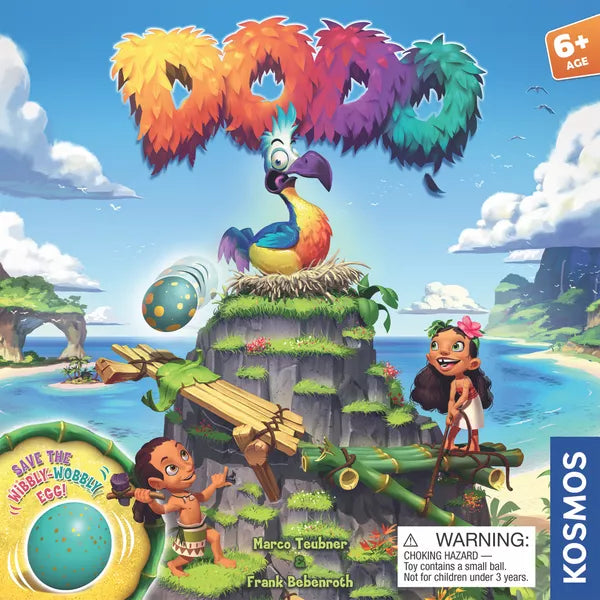
Speed is of the essence in the co-operative game Dodo as the bird has laid its egg on the highest mountain peak, but then unobservantly let it fall out of the nest and towards the cliff... By using teamwork, you can bring the rolling egg safely to the foot of the mountain! Quickly roll the building material you need, collect hammers and nails, and attach bridges to the sides of the mountain. If you manage to steer the egg safely into the lifeboat, you've won together
£30.00 £27.00
Subscribe to our emails